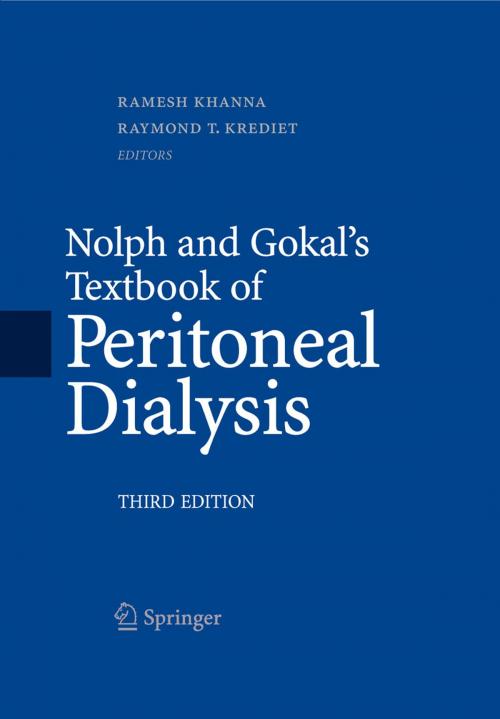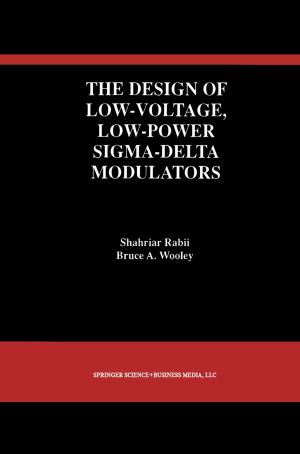Nolph and Gokal's Textbook of Peritoneal Dialysis
Nonfiction, Health & Well Being, Medical, Specialties, Internal Medicine, Nephrology, Cardiology| Author: | ISBN: | 9780387789408 | |
| Publisher: | Springer US | Publication: | May 28, 2009 |
| Imprint: | Springer | Language: | English |
| Author: | |
| ISBN: | 9780387789408 |
| Publisher: | Springer US |
| Publication: | May 28, 2009 |
| Imprint: | Springer |
| Language: | English |
Nolph and Gokal's Text Book of Peritoneal Dialysis, Third Edition, covers advances made in the field for the past 30 years. During the past two decades, the time during which this therapy has been increasingly utilized, this text has continued to be recognized as the major source of the discipline's base knowledge. The evolution of this text to its newest edition parallels the growth of peritoneal dialysis from Continuous Ambulatory Peritoneal Dialysis in the eighties to the current therapy that encompasses manual and automated therapies with full emphasis on adequacy of dialysis dose.
Peritoneal dialysis represents an intracorporeal technique for blood purification. This unique dialysis system represents one of many human attempts to manipulate nature for sustenance of life. The past few years of advances have focused on further improvement of the technique. Areas that have fueled the interest of researchers include: (1) Physiology of high transporters (and the role of genetics and inflammation); (2) Continued debate over the most appropriate adequacy indices (small solute clearances, large solute clearances, clinical assessment etc.); (3) Understanding, preventing and treating the MIA syndrome in PD patients ( including the roles of leptin, and adiponectin); (4) Pathogenesis and newer management strategies of vascular calcification; (5) Continued improvements in infectious complications including peritonitis; (6) Further improvements in catheter technology; (7) Automated techniques; (8) Explaining and correcting PD underutilization; (9) Rationale and applications of newer dialysis solutions; (10) New understanding and approaches to management of osteodystrophy; (11) Refinements in anemia management including new insights in iron metabolism in PD patients; (12) Further definition of indications for PD; (13) The ideal time to initiate dialysis.
Newer insight into host defense mechanisms have also made the past decade of advances in the field more meaningful for clinicians. This text also covers the knowledge gained from animal models of peritoneal dialysis.
Nolph and Gokal's Textbook of Peritoneal Dialysis, Third Edition is a compilation of the latest knowledge in the field. It cites and describes in great detail, the new discoveries and the evolution of understanding the subject of these discoveries.
Nolph and Gokal's Text Book of Peritoneal Dialysis, Third Edition, covers advances made in the field for the past 30 years. During the past two decades, the time during which this therapy has been increasingly utilized, this text has continued to be recognized as the major source of the discipline's base knowledge. The evolution of this text to its newest edition parallels the growth of peritoneal dialysis from Continuous Ambulatory Peritoneal Dialysis in the eighties to the current therapy that encompasses manual and automated therapies with full emphasis on adequacy of dialysis dose.
Peritoneal dialysis represents an intracorporeal technique for blood purification. This unique dialysis system represents one of many human attempts to manipulate nature for sustenance of life. The past few years of advances have focused on further improvement of the technique. Areas that have fueled the interest of researchers include: (1) Physiology of high transporters (and the role of genetics and inflammation); (2) Continued debate over the most appropriate adequacy indices (small solute clearances, large solute clearances, clinical assessment etc.); (3) Understanding, preventing and treating the MIA syndrome in PD patients ( including the roles of leptin, and adiponectin); (4) Pathogenesis and newer management strategies of vascular calcification; (5) Continued improvements in infectious complications including peritonitis; (6) Further improvements in catheter technology; (7) Automated techniques; (8) Explaining and correcting PD underutilization; (9) Rationale and applications of newer dialysis solutions; (10) New understanding and approaches to management of osteodystrophy; (11) Refinements in anemia management including new insights in iron metabolism in PD patients; (12) Further definition of indications for PD; (13) The ideal time to initiate dialysis.
Newer insight into host defense mechanisms have also made the past decade of advances in the field more meaningful for clinicians. This text also covers the knowledge gained from animal models of peritoneal dialysis.
Nolph and Gokal's Textbook of Peritoneal Dialysis, Third Edition is a compilation of the latest knowledge in the field. It cites and describes in great detail, the new discoveries and the evolution of understanding the subject of these discoveries.















